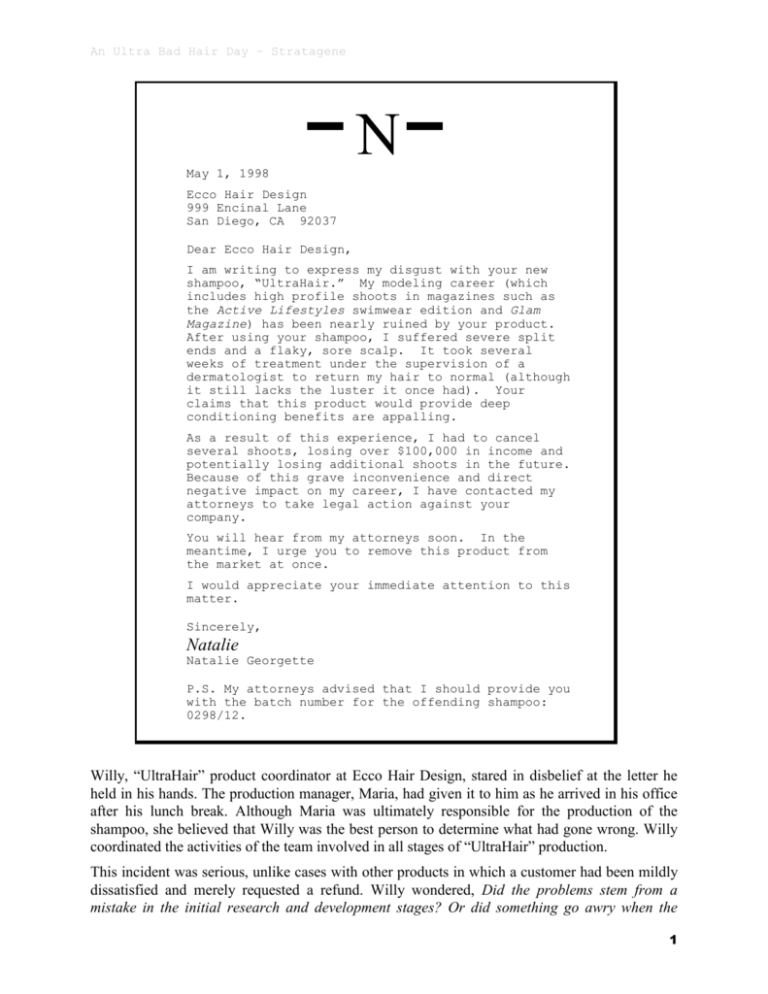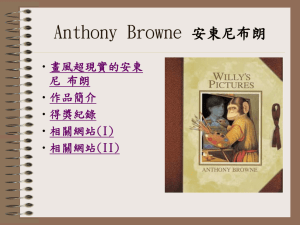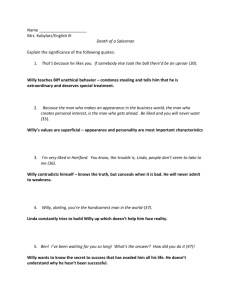Ultra Bad Hair Day Case Study
advertisement

An Ultra Bad Hair Day – Stratagene May 1, 1998 N Ecco Hair Design 999 Encinal Lane San Diego, CA 92037 Dear Ecco Hair Design, I am writing to express my disgust with your new shampoo, “UltraHair.” My modeling career (which includes high profile shoots in magazines such as the Active Lifestyles swimwear edition and Glam Magazine) has been nearly ruined by your product. After using your shampoo, I suffered severe split ends and a flaky, sore scalp. It took several weeks of treatment under the supervision of a dermatologist to return my hair to normal (although it still lacks the luster it once had). Your claims that this product would provide deep conditioning benefits are appalling. As a result of this experience, I had to cancel several shoots, losing over $100,000 in income and potentially losing additional shoots in the future. Because of this grave inconvenience and direct negative impact on my career, I have contacted my attorneys to take legal action against your company. You will hear from my attorneys soon. In the meantime, I urge you to remove this product from the market at once. I would appreciate your immediate attention to this matter. Sincerely, Natalie Natalie Georgette P.S. My attorneys advised that I should provide you with the batch number for the offending shampoo: 0298/12. Willy, “UltraHair” product coordinator at Ecco Hair Design, stared in disbelief at the letter he held in his hands. The production manager, Maria, had given it to him as he arrived in his office after his lunch break. Although Maria was ultimately responsible for the production of the shampoo, she believed that Willy was the best person to determine what had gone wrong. Willy coordinated the activities of the team involved in all stages of “UltraHair” production. This incident was serious, unlike cases with other products in which a customer had been mildly dissatisfied and merely requested a refund. Willy wondered, Did the problems stem from a mistake in the initial research and development stages? Or did something go awry when the 1 An Ultra Bad Hair Day – Stratagene shampoo was produced on a large scale? Why hadn’t the quality control team identified the problem? Were there other issues to consider? Willy and his team would need to identify the cause of the problem, why it was not discovered before the shampoo was released for sale, and how the problem should be fixed. Was the problem isolated to a specific batch, or must Ecco do a nationwide recall? This was potentially a high-profile case, since it involved a well-known model. The threat of a lawsuit made solving the problem Willy’s highest priority. What potential causes should Willy consider? Based on the symptoms described by Natalie, Willy ruled out the possibility of incorrect detergent concentration (this particular concentration had been used successfully with other similar products). Moreover, the scents involved in production had been thoroughly tested by another company prior to their inclusion in the shampoo. Willy began by calling a meeting of the team within Ecco Hair Design who had been involved in the making of “UltraHair.” The Structure of Ecco Hair Design The “UltraHair” team included individuals from Research, Process Development, Manufacturing, and Quality Control (see Appendix for a flowchart of potential departments within biotechnology companies). The responsibilities of these divisions are as follows. The Research Division is where the Ecco Hair Design scientists developed the initial idea for “UltraHair.” Mark works in this division. After completing a Master’s Degree in molecular biology, he was fortunate to find a job in a company where he could explore his own ideas and turn them into an actual product. He and his research group determined the ingredients needed to make “UltraHair” shampoo extra conditioning. In Process Development, Ann was responsible for scaling up the research process used in making “UltraHair” from the laboratory bench level to a pilot plant level. This included scaling up the fermentation process used to prepare protein additives by working with the fermentation division—a division whose staff members often received an overwhelming number of orders at one time. Ann’s Bachelor’s Degree in molecular biology provided her with the skills necessary for these responsibilities. Within the Manufacturing Division, Steve supervised the group that produced the final product. In doing this, he followed stringent procedures (Good Manufacturing Practice, or, GMP) to ensure a consistent product. This required a background in science and the mechanical skills to work with sophisticated equipment. Fortunately, Steve was certain that he had completed the necessary paperwork and documentation during the actual manufacturing of “UltraHair.” This would allow him and his colleagues to review all steps he had taken during manufacturing. In the Quality Control (QC) Division, Sharon ensured that “UltraHair” met certain minimum specifications of quality such as purity of ingredients. To confirm this purity, she used an approved QC protocol. Sharon received her training through a biotechnology program at a local community college. 2 An Ultra Bad Hair Day – Stratagene Put yourself in Willy’s shoes... If you were Willy, what questions would you ask Mark, Ann, Steve and Sharon, based on the role that she or he had in the making of “UltraHair”? 3 An Ultra Bad Hair Day – Stratagene Willy’s Next Steps Together with Mark, Ann, Steve and Sharon, Willy reviewed the chemicals and general steps taken in developing the shampoo. The shampoo contained the following ingredients: Ingredient Purpose Purified Water Solvent Sodium Laurel Sulfate Detergent Protein Luster, manageability, conditioning Coloring & Fragrance Aesthetics Methylcellulose Thickening agent Upon seeing that the shampoo contained proteins, Willy asked his team whether protein contaminants could cause Natalie’s symptoms. The team decided to investigate whether a contaminant had found its way into the desired protein additive. Yet the process Ecco used to separate proteins had been fool-proof to date. Did the separation process work? Did an undesirable ingredient remain in the shampoo? If so, how? The Process of Protein Purification First, what is a protein? Proteins are chain-like molecules composed of amino acids. Every protein has a unique structure and 3-dimensional shape and unique chemical properties. In the case of “UltraHair,” protein additives were intended to make hair silky and strong while providing conditioning benefits for the scalp. (See Appendix and Resource List for additional information about proteins.) How do you isolate a protein and where do proteins come from? Protein purification is essentially a method of separating the desired species of protein out of a mixture of proteins. The separation is done based on the proteins’ physical or chemical properties such as size or charge. One method of purifying a protein is to pass the protein through a column packed with a resin whose chemical or physical properties allow each protein in a mixture to interact with it in a different manner. This method is referred to as “column chromatography.” By passing the proteins through a column, some of the proteins will pass through, and some will be retained on the resin. There are hundreds of resins, each one with unique properties. By choosing the appropriate resins, a specific protein can be separated from all the others in a mixture. The protein is collected in a vial as it passes through the column. This collected amount of protein is referred to as a “fraction.” (See Appendix for more details regarding protein separation.) At first glance, it seemed that the proper steps had been taken to make the proteins for the shampoo. Mark outlined the purification process that he had developed in research, sharing his results which showed that a contaminant protein was, in fact, removed by the process. Ann reported the steps she had taken to scale the process up. She had used almost exactly the same protocol that Mark had developed, with only minor modifications. In particular, Ann had retained the same molecular sizing resin (G25) that Mark had used in the final purification step, which is the important step for removing the contaminant protein. G25 resin excludes all molecules whose size is greater than 5,000 daltons molecular weight (MW). Steve produced the actual batch records from the manufacturing runs, proving that all of the steps had been performed to specifications. Finally, Sharon affirmed that all the quality control assays had been done correctly, including the final spectrophotometric analysis of the G25 column purification step (see Figure 1). Figure 1 shows the spectrophotometric analysis of the fractions collected off of a G25 sizing column. Fractions 9–27 (the left peak which appears red in color in the collected fraction) had been collected because they contained the desirable protein additive for the shampoo (the “luster 4 An Ultra Bad Hair Day – Stratagene protein”); fractions 42–63 (the right peak which appears yellow in color in the collected fraction) had been discarded because they contained a protein contaminant (a protein that was known to cause reactions such as scalp irritation). 1.4 1.2 ABS 450 nm 1 0.8 0.6 0.4 0.2 75 66 57 48 39 30 21 12 3 0 Fraction # Figure 1. Spectrophotometric analysis of the G25 column purification step. [insert photograph of column] As Willy and his team reviewed the documents, they discovered that a new batch of protein additive had been prepared by fermentation and used in the production lot of shampoo used by Natalie Georgette. The batch preparation was purified according to Standard Operating Procedures (SOPs). SOPs are the step-by-step guidelines that a company develops to ensure that the exact same steps are taken each time a product is reproduced. The SOP also serves as a record of the steps taken in making a product so that in cases like this, the steps can be reviewed to detect where a problem may have arisen. The final G25 column separated a possible contaminant from the desired protein additive. According to the quality control assays, which used the red color of the protein additive as a measure of its relative purity, the materials obtained at this step were clean for use in production. Documentation was complete. See Figure 2 below for a graphic representation of the protein separation process used in making the original formulation for “UltraHair.” Protein mixture containing both desirable and undesirable proteins Known Contaminant Discarded Separated using G25 column “Luster Protein” Used in production of “UltraHair” Figure 2. The Protein Separation Process Used in the Original Formulation of “UltraHair.” 5 An Ultra Bad Hair Day – Stratagene What Now? The team’s findings appeared to put him at another dead end, but Willy persisted. He decided to check the purity of the new batch in a different way, by using another assay method called SDSPAGE (sodium dodecylsulfate-polyacrylamide gel electrophoresis). Willy thought, “Fortunately, we freeze small samples from the fermentation run.” He loaded the SDS-PAGE gel with a known set of molecular weight standards (Lane A) and the two separate aliquots from the fermentation runs (Fermentation 0298/121 in Lane B and Fermentation 0697/082 in Lane C). After staining the gel, he anxiously looked at the results (see Figure 3). Figure 3. SDS-PAGE results. [NEED TO REPLACE] This could be it! The two batches were not identical. In addition to the desired product, an extra protein band was visible in the new batch preparation. Now Willy must clean up (remove the unwanted band) the batch of protein additive. His own research work had not yielded a contaminant in the material recovered after the G25 sizing step, yet a contaminant was clearly visible on the SDS-PAGE gel. Willy has decided to try to separate the two proteins by using a different size exclusion resin (G50; this excludes all molecules whose size is above 30,000 dalton molecular weight, MW) and an ion exchange resin (which separates proteins on the basis of differences in charge) with SDSPAGE analysis to visualize all proteins. He tells you—his research associate—that this is your task. What do you need to know to carry out Willy’s instructions? This is your chance to ask questions to clarify what Willy and his team discovered. 1 2 “Fermentation 0298/12” refers to the batch that was fermented in February (02), 1998 (98) in Fermenter #12 (/12). “Fermentation 0697/08” refers to the batch that was fermented in June (06), 1997 (97) in Fermenter #8 (/08). 6




